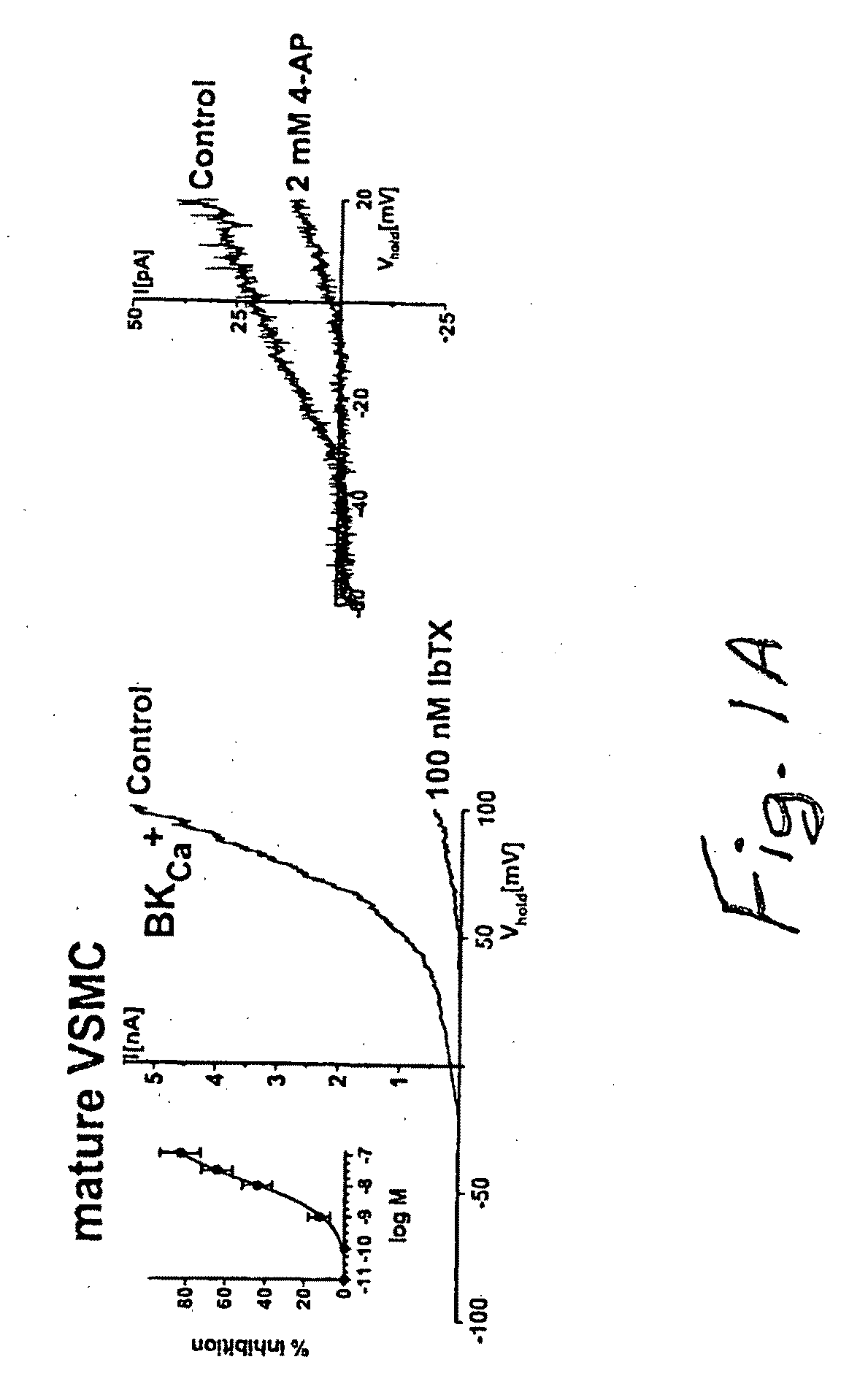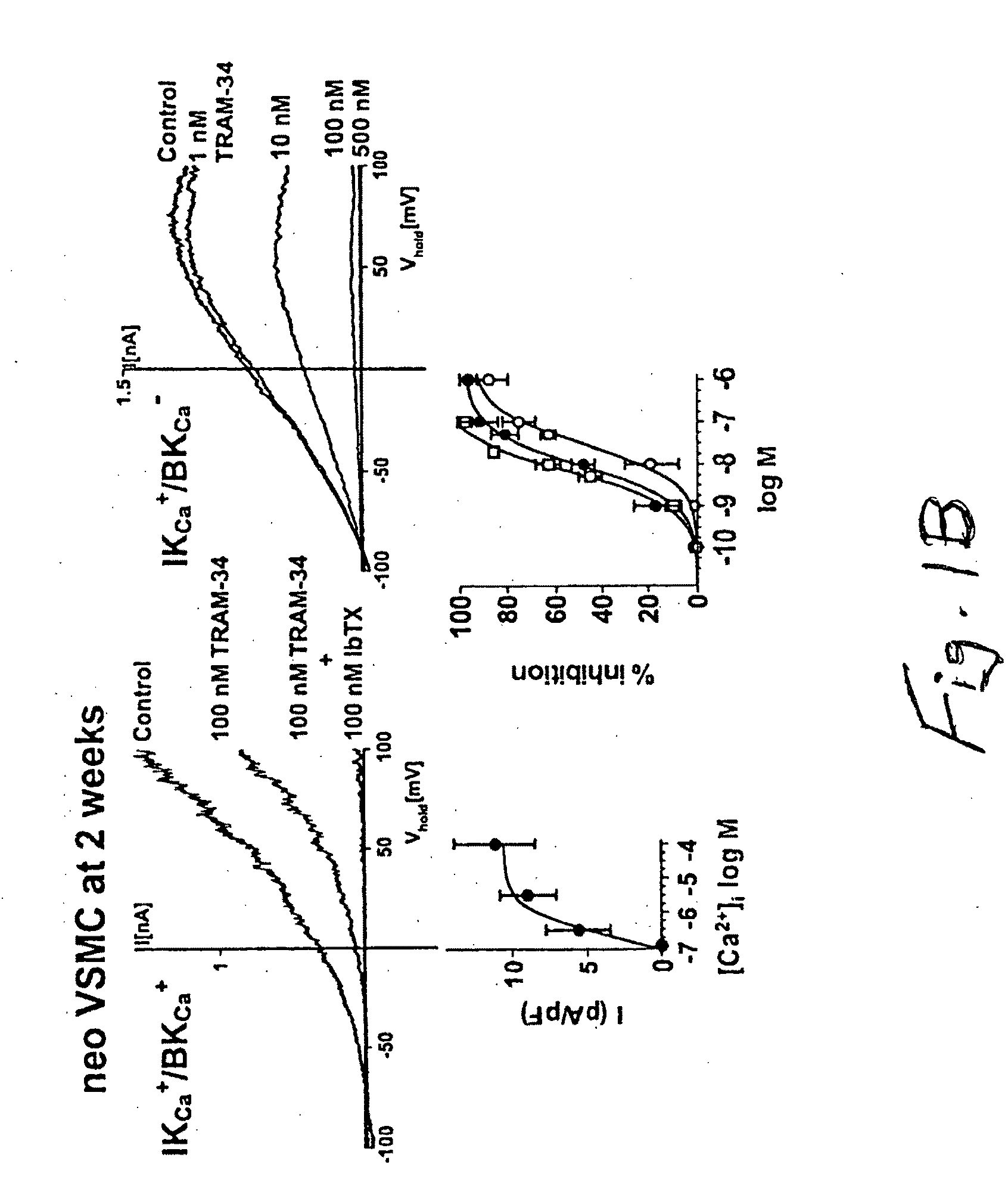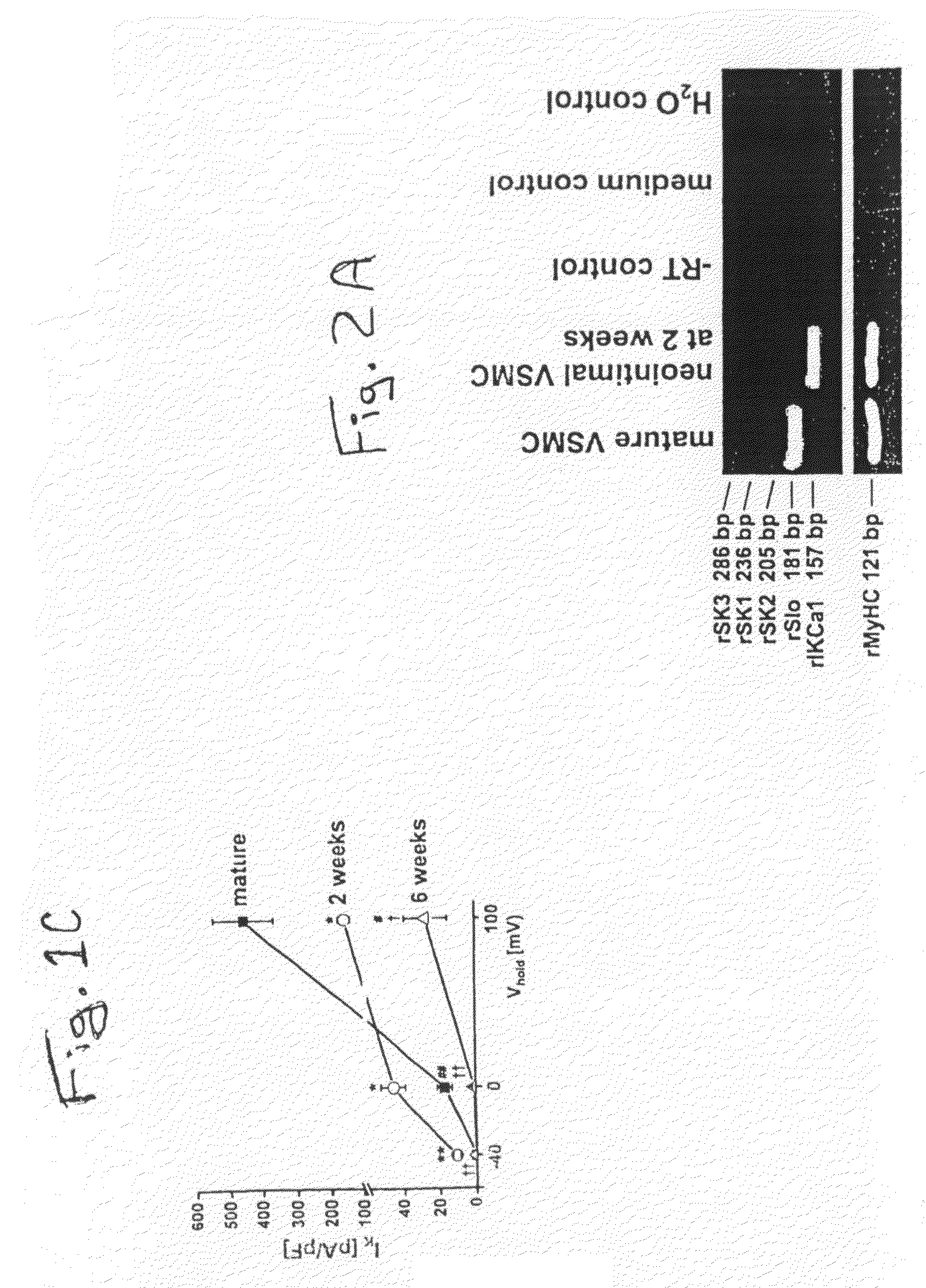Compounds, Methods And Devices for Inhibiting Neoproliferative Changes in Blood Vessel Walls
a technology of blood vessel walls and compounds, applied in the direction of biocide, drug compositions, cardiovascular disorders, etc., can solve the problems of limited use of neoproliferative changes to date, and achieve the effect of preventing neoproliferative changes
- Summary
- Abstract
- Description
- Claims
- Application Information
AI Technical Summary
Benefits of technology
Problems solved by technology
Method used
Image
Examples
example 1
Synthesis of Triarylmethanols
General Method A
[0063]25 mmol of magnesium turnings and a catalytic amount of iodine to initiate the reaction were stirred in 50 ml of anhydrous diethyl ether. Then, a solution containing 25 mmol of the appropriate aryl bromide in anhydrous diethyl ether (50 ml) was slowly added allowing a gentle reflux. Once the addition was complete the mixture was heated at reflux until all the magnesium was consumed. Next, a solution of the required benzophenone (25 mmol) in anhydrous diethyl ether (50 ml) was slowly added. The resulting mixture was heated at reflux for 5-12 h, then cooled to 0° C. and poured into 100 ml of cold water. To dissolve the precipitating magnesium hydroxide the mixture was acidified with concentrated HCl. The organic phase was separated, and the aqueous phase was extracted with diethyl ether. The combined organic phases were washed with sodium bicarbonate solution (10%) and then dried over sodium sulfate. Evaporation of the solvent gave th...
example 2
Preparation of (2-Chlorophenyl) diphenyl Methanol
Compound T3
[0064]Following the procedure outlined in Example 1, 1.3 g (52 mmol) of magnesium turnings, 10.0 g (52 mmol) of 1-bromo-2-chlorobenzene and 9.4 g (52 mmol) benzophenone gave 9.81 g (64%) of (2-Chlorophenyl) diphenyl methanol (Compound T3), mp: 91° C.
example 3
[0065]Following the procedure outlined in Example 1, the following triarylmethanols (Table 1) were prepared.
TABLE 1Designa-tion onMeltingTriarylmethanol CompoundAppendix AYieldPoint(4-Chlorophenyl)diphenyl methanolT156%82°C.(3-Chlorophenyl)diphenyl methanolT252%53°C.Bis-(4-chlorophenyl)phenyl methanolT456%86°C.Bis-(3-chlorophenyl)phenyl methanolT552%oil(2-Thienyl)diphenyl methanolT964%129°C.(4-Fluorophenyl)diphenyl methanolT1258%120.5°C.(4-Fluorophenyl)(2-thienyl)phenylT1462%75°C.methanolBis-(4-methoxyphenyl)phenylT1562%sticky darkmethanolred pasteTris-(4-methoxyphenyl) methanolT1648%75°C.Di-(2-thienyl) phenyl methanolT3554%86°C.(2-Fluorophenyl)diphenyl methanolT3669%116°C.(2-Chlorophenyl)(2-thienyl)phenylT4358%90.5°C.methanolDiphenyl(2-trifluoromethylphenyl)T5457%111°C.methanolDiphenyl(4-trifluoromethylphenyl)T5568%oilmethanolDiphenyl(3-trifluoromethyl-phenyl)T5662%52°C.methanol
PUM
| Property | Measurement | Unit |
|---|---|---|
| logP | aaaaa | aaaaa |
| pH | aaaaa | aaaaa |
| weight | aaaaa | aaaaa |
Abstract
Description
Claims
Application Information
 Login to view more
Login to view more - R&D Engineer
- R&D Manager
- IP Professional
- Industry Leading Data Capabilities
- Powerful AI technology
- Patent DNA Extraction
Browse by: Latest US Patents, China's latest patents, Technical Efficacy Thesaurus, Application Domain, Technology Topic.
© 2024 PatSnap. All rights reserved.Legal|Privacy policy|Modern Slavery Act Transparency Statement|Sitemap



